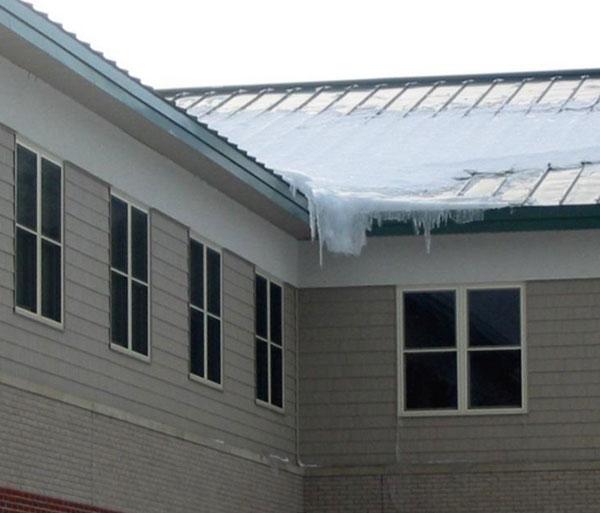When winter arrives, homeowners face the challenge of dealing with ice dams on their roofs. These ice formations can cause significant damage to the structure, leading to leaks, water infiltration, and costly repairs. In the quest for an effective solution, many homeowners wonder if metal roofs can prevent ice dams. In this article, we will explore the characteristics of metal roofs and their ability to mitigate ice dams, providing valuable insights for homeowners seeking winter protection for their homes.

Understanding Ice Dams and Their Impact
Ice dams are ridge-like formations that occur at the edge of a roof, preventing melting snow from properly draining off. As water accumulates behind these dams, it can seep into the roof, causing damage to the underlying materials, insulation, and even interior spaces. Ice dams are a common problem in regions with cold climates and frequent snowfall. Homeowners often seek ways to prevent or minimize their occurrence to safeguard their homes.
The Benefits of Metal Roofs
Metal roofs have gained popularity due to their durability, longevity, and aesthetic appeal. Beyond these advantages, metal roofs offer specific benefits in combating ice dams and winter-related issues. Let’s explore some of the key advantages:
- Enhanced Snow Shedding: The smooth surface of a metal roof, combined with its slope, promotes effective snow shedding. When snow accumulates on a metal roof, it tends to slide off more easily compared to other roofing materials, reducing the potential for ice dams to form.
- Non-Porous Material: Metal roofs are non-porous, which means they do not absorb moisture. This characteristic is crucial in preventing water infiltration, as it prevents the formation of ice dams by minimizing the amount of water that can seep into the roof.
Factors Influencing Ice Dam Formation
While metal roofs offer advantages in mitigating ice dams, it is important to consider other factors that can contribute to their formation. Understanding these factors helps homeowners enhance their metal roofs’ effectiveness in preventing ice dams.
- Insulation and Ventilation: Proper insulation and ventilation play a vital role in maintaining consistent roof temperature. Insufficient insulation or inadequate ventilation can lead to temperature variations, which contribute to ice dam formation. It is essential to ensure that your attic or roof space is adequately insulated and ventilated to minimize the risk of ice dams.
- Local Climate Conditions: Although metal roofs are effective in combating ice dams, certain climate conditions may still pose challenges. In areas with extremely cold temperatures or heavy snowfall, additional preventive measures might be necessary, such as installing heat cables or using roof rakes to manually remove snow.
Additional Measures to Complement Metal Roofs
While metal roofs offer inherent advantages, homeowners can further enhance their protection against ice dams by implementing a combination of strategies. Here are some additional measures to consider:
- Proper Gutter Maintenance: Regular gutter maintenance ensures proper water flow and reduces ice dam risk. Clearing debris and keeping gutters free from obstructions allows melted snow to drain effectively.
- Ice and Water Shield: Installing an ice and water shield beneath the metal roofing provides added protection against water infiltration and minimizes ice dam formation.
Conclusion:
Metal roofs offer significant benefits in preventing ice dams due to their snow-shedding properties and non-porous material. However, it is important to consider other factors that can contribute to ice dam formation and take additional measures to maximize their effectiveness. Proper insulation, ventilation, and regular maintenance are essential for a comprehensive approach to winter protection. Homeowners can prevent ice dams and preserve their metal roofs in winter with proper understanding and precautions.



Leave a Reply